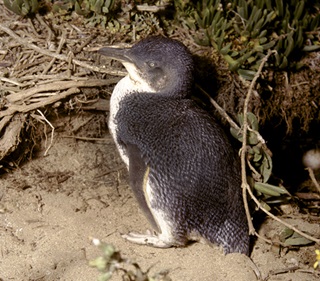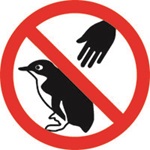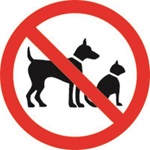 What do they look like?
What do they look like?
Standing about 30 to 35cm in height, the little penguin weighs approximately one kilogram when fully grown.
Its upper body and flippers are slate blue or blue-grey in colour, with the underside and throat being white. The little penguin's bill is black, its feet are pale pink, and its eyes are silvery-grey. The males of the species are slightly bigger than the females, and have a deeper bill and larger head.
What do they sound like?
The little penguin makes a variety of noises for different situations. It has a short, sharp bark when at sea; it uses a variety of throbbing growls and hoarse whoops when attracting a mate; and if it is disturbed it lets out a sharp, snorting yelp.


 The colony of little penguins at Manly on Sydney Harbour is protected as an endangered population under the Biodiversity Conservation Act 2016. Areas of penguin habitat around Manly have also been declared 'critical habitat'. OEH is researching little penguins, and has prepared a recovery plan for the little penguins at Manly.
The colony of little penguins at Manly on Sydney Harbour is protected as an endangered population under the Biodiversity Conservation Act 2016. Areas of penguin habitat around Manly have also been declared 'critical habitat'. OEH is researching little penguins, and has prepared a recovery plan for the little penguins at Manly. If you are near a little penguin colony, you can help protect these native seabirds:
If you are near a little penguin colony, you can help protect these native seabirds: